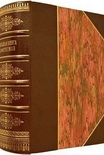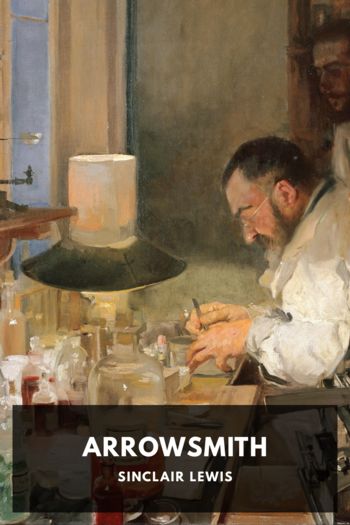Holocaust: The Nazi Persecution and Murder of the Jews, Peter Longerich [essential books to read TXT] 📗

- Author: Peter Longerich
Book online «Holocaust: The Nazi Persecution and Murder of the Jews, Peter Longerich [essential books to read TXT] 📗». Author Peter Longerich
82
Racial Persecution, 1933–1939
administrators’, agents, critics, dealers, and so on, they were made primarily
responsible for the distribution and promotion of undesirable modern, ‘degener-
ate’ (entartet) or simply merely ‘foreign’ art. 48 The Jews, as ‘primarily a business-minded people’, according to Hans Severus Ziegler, General Manager of the
National Theatre in Weimar and a leading Nazi cultural policy maker, at the
opening of the ‘Degenerate Music’ exhibition in 1938, had turned ‘cultural and
artistic objects, like the objects of politics, into business commodities’; they had
succeeded ‘in cutting off the Volk from its creative forces, from its gifts and its
genius, and thus removing it from the most vivid examples of race and Volkstum’;
the result was the ‘terrible alienation from its better self, from its own essence,
from all historic values, from its creative personality’. 49 Hence the ‘removal of Jews from cultural life’ could not exempt ‘art-dealers, cinema owners, publishers and
booksellers’.
With the tightening of the conditions of admission into the Reich Chamber of
Culture in the spring of 1934, the ground was laid for the definitive Entjudung
of cultural life as a whole:50 the Reichsschrifttumskammer (Reich Chamber of Letters) began the process in 1935 with the exclusion of its Jewish members, and
other chambers followed this model over the coming months and in the course of
1936.51 For economic reasons above all, however, a series of exceptional regulations for Jewish artists were put into force. Moreover, Goebbels did not at first manage
to exclude Jews completely from the professions of the ‘culture business’; the
ministerial bureaucracy slowed down this process, so that prohibitions on Jewish
cinema-owners, art and antique dealers, and other professions from working
came into effect only from 1937.52 The existing exceptions repeatedly offered National Socialist cultural policy makers, with Propaganda Minister Goebbels at
their head, the opportunity finally to demand a 100 per cent ‘Jew-free’ cultural
life; 53 it was the ‘Jewish question’, still unresolved in spite of all efforts to the contrary, that according to this view stood in the way of a truly homogeneous
‘German culture’. In fact it was only after the pogrom of November 1938 that this
cleansing process came to an end with the abolition of the last admission regu-
lations for Jewish artists, as well as with the removal of the last Jewish cultural
enterprises. 54
However, that certainly did not mean an end to the efforts to achieve the
Entjudung of German cultural life. This was because the controlling cultural
political institutions—the Propaganda Ministry, the Reich Chamber of Culture,
‘The Rosenberg Bureau’, the Party Censorship Board, and others—had, following
the watchword of Entjudung or ‘removal of Jewish influence’, created an instru-
ment that could be deployed almost at will, to take action against unpopular
artistic trends, predominantly against representatives of modern art, and could
open up the culture industry to artists close to the Party. 55 This process had still not come to an end with the removal of the Jews: as late as 1942, for example, a
National Socialist author recorded the continuing after-effects of ‘unworldly and
Interim Conclusions
83
Jew-lovers lost to their own kind (artvergessen)’, who had continued the Jewish
‘demolition work’ even after the assumption of power, and had to be hunted down
as ‘slaves’ and ‘comrades’ of the Jews. 56 The new ‘German’ culture could only arise out of a far-reaching cleansing process, permanently dissociating itself from
‘foreign’ influences that had already penetrated far into the German Volk.
The fact that the ‘first major German art exhibition’ showing Nazi-inspired
art, in 1937, was opened at the same time as the propaganda exhibition ‘Entar-
tete Kunst’ (degenerate art), and in the same place, in Munich, 57 reveals the complementary function that the Entjudung of the culture industry and the
construction of a ‘German’ culture had: the new ‘German’ art was not explicable
in its own terms, but needed a constant reference to the negative example of the
‘degenerate’ trend in art. Although the ‘Degenerate Art’ exhibition showed
primarily non-Jewish artists, in his speech at the Reich Chamber of Culture’s
annual congress in
58
1937
Goebbels significantly singled out the exhibition as a
striking example of ‘how deeply the pernicious Jewish spirit has penetrated
German cultural life’—a striking example, in fact, of the usefulness of the idea
of the Verjudung of art as an all-purpose weapon against unpopular trends
in art.
The programmatic guidelines for German film, published by a Nazi cultural
functionary in 1934, make it clear how ‘German character’ was to unfold on screen
through the removal of actors ‘of non-German descent’: ‘Of particular importance
for the education of all Germans into national consciousness will be the depiction
of the German character in film. National German film should show the German
Volk people of its own kind, whose characters and motives it understands, whose
words are addressed to it from the soul. Hence the law requires the actors to be of
German descent. In future, therefore, actors will appear on the screen in whom the
German will see his own race embodied, and who teach him to love and honour
his nation. German people, German atmosphere, German disposition, German
spirit must make their mark on film. Then it will help to fulfil the great task of
German art in holding up to the German Volk a mirror of its soul.’59
What is particularly interesting about this quotation in our context is the fact
that the removal of actors ‘of non-German descent’ (and other measures for the
Entjudung of the film industry) should have formed the preconditions for the
intended ‘German character’ of film. But in what concrete way did this ‘German
character’ find expression in the individual film productions? 60 The great mass of films, aimed at the light entertainment of the audience, avoided depicting their
protagonists as emphatically ‘German’, but tried on the contrary—not least by
employing a series of non-German stars—to match the international standard of
film entertainment. 61 Those films which did risk emphatically ‘German’ themes generally did so by placing their ‘German’ or ‘Germanic’ heroes opposite comic-ally caricatured ‘foreigners’, whether they were Jews, Slavic ‘sub-humans’,
or Englishmen or Frenchmen identified as Western and decadent (meaning:
84
Racial Persecution, 1933–1939
Jewish-influenced). 62 The characterization of the ‘German’ could not occur without a constant reference to the ‘non-German’.
The most important change in the repertoires of German theatres after 1933 was
due to the fact that Jewish and politically undesirable contemporary dramatists,
who had previously written almost 40 per cent of plays





Comments (0)